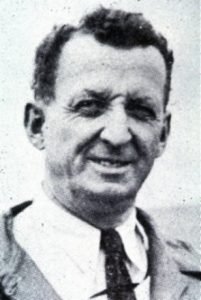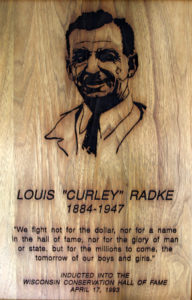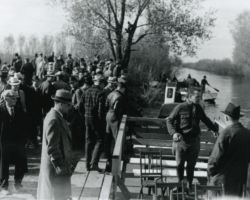1884 – 1947
Inducted 1993

“We fight not for the dollar, not for a name in the hall of fame, nor for the glory of man or state, but for the millions to come, the tomorrow of our boys and girls.”
“This we know, there are thousands of acres of good land in Wisconsin that can be made agriculturally valuable with much less effort and expense than was connected with the drainage of Horicon marsh.”
“A program for world peace can be forcibly strengthened by a program of worldwide conservation.” – Louis Radke
Louis Radke had not yet been born when thousands of ducks used a wetland in south central Wisconsin for nesting grounds. He only heard of numbers so large their flight blackened the sky. That was before settlers dammed the outlet of the marsh in the mid-1800s, creating a lake for steamboats. It was before the marsh was drained and sold in small parcels to grow vegetables. It was before the land was depleted of nutrients, becoming a peat tinderbox.

A native of Horicon, Radke became the most ardent supporter of efforts to reclaim the drained, desolate area. He and others concerned about the loss of Horicon Marsh formed a local chapter of the Izaak Walton League in 1921. For seven years, league members gathered support to restore the marsh. Radke spent nights and weekends conveying the urgency to women’s and men’s groups around the state. He circulated petitions signed by 100,000 people.
In 1927, the state Legislature passed the Horicon Marsh Wildlife Refuge Bill, providing money to buy the land and construct a dam. Radke and A. D. Sutherland (WCHF Inductee) continued to fight legal battles until 1943. Within a few years of reflooding, the natural wetland began to repair itself. To help restore the legendary duck population, Radke organized “duck liberation day,” releasing more than 1,000 ducks to attract wild ducks.
Today the 32,000-acre Horicon Marsh is the largest freshwater cattail marsh in the United States, a unit of the Ice Age National Scientific Reserve. Known for Canada geese, it is also home to the largest redhead duck population east of the Mississippi River. Some 265 bird species have been recorded. The southern third of the marsh is managed by the Wisconsin Department of Natural Resources. The northern two-thirds is a national wildlife refuge, purchased in 1941.
Radke advocated for wetlands restoration beyond Horicon. He urged other counties to fight for recovery of marshes that had been drained. He served as national president and a national director of the Izaak Walton League. He was president of the Wisconsin Conservation League at the time of his death. He lived to see his dream realized.
Resources
Louis Radke Legislative Citation
Looking Back on Horicon Marsh, article by Rick Stel, 1992
Louis Radke, Prominent State Conservation Leader, Stricken, article from Sheboygan Press, 1947
With Wisconsin Waltonians, article, 1930
Progress: Saving Horicon Marsh, article by Louis Radke, 1929
Izaak Walton League, letter from Louis Radke, 1927
A Wisconsin Drainage Crime, article by Louis Radke, 1926
Photos

These images may be used under the Creative Commons Attribution-NonCommercial-NoDerivatives 4.0 International License.








